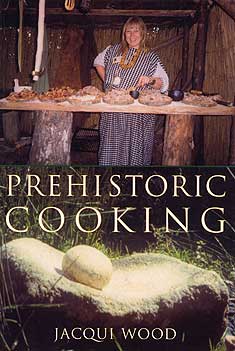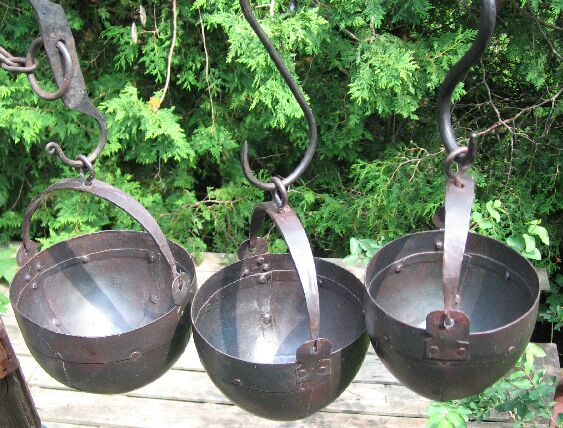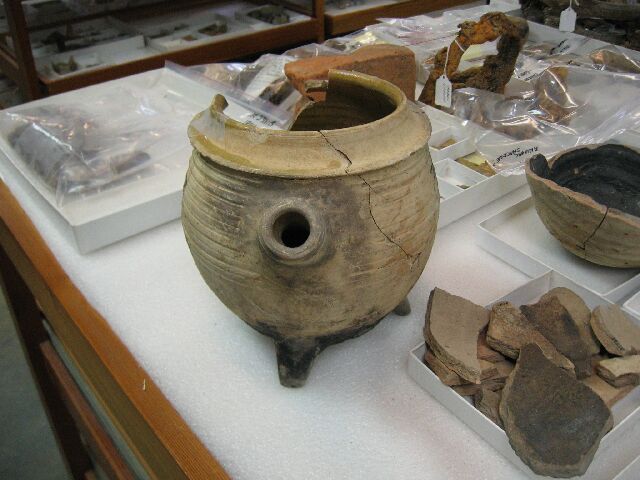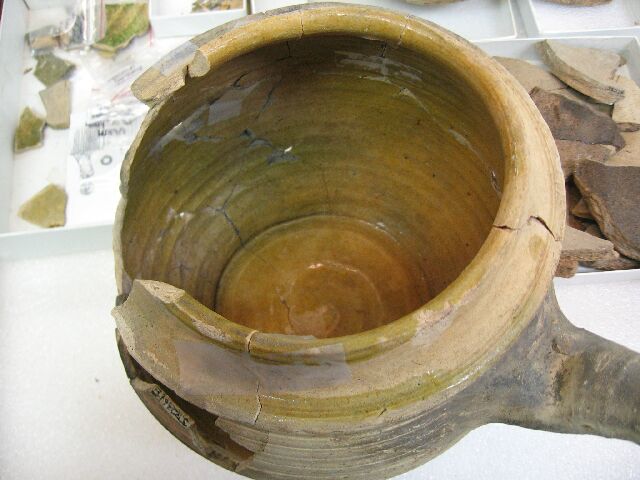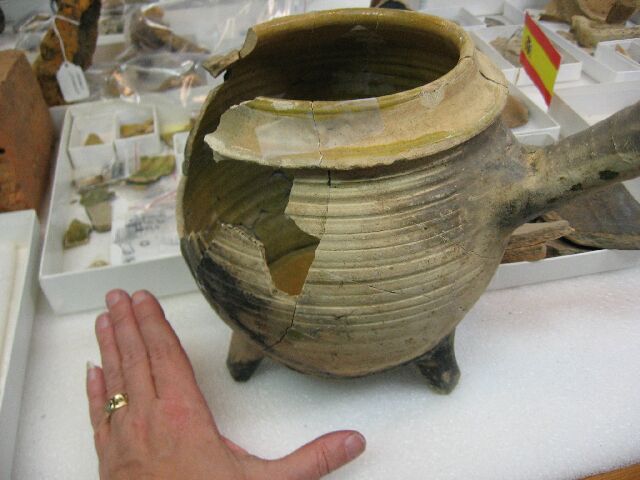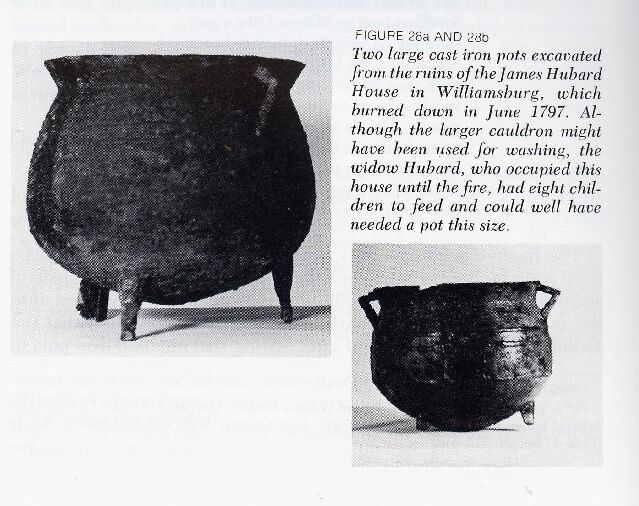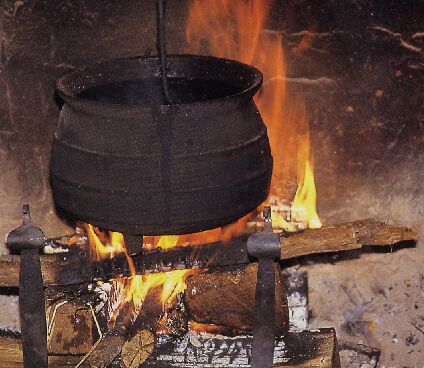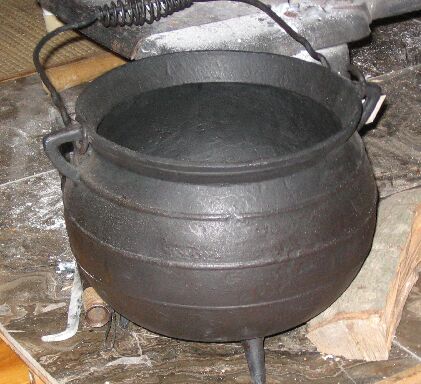Ah, so what is “skyr” you are asking? Well, now, that’s a very good question, and so far I haven’t found an answer of only a few words. It’s kind of like cheese, or yoghurt, or cottage cheese, or sour cream, or maybe Quark (having never yet met Quark face to face, I’m not sure.)
It’s supposedly a traditional and well-loved foodstuff of the Norse. Dating back, at least, to the Viking Age. Still favoured (and modernized) today in Scandinavian countries, and now being imported into select areas of North America.
It’s one of those things I’ve known about for ages, but never really thought about. It wasn’t till recently that I’ve actually tried to find out some more concrete info, and realized just how hard it is to define.
So, let’s turn to some references. I’ll start with the old-fashioned kind: books.
From
The Cooking of Scandinavia, one of the Time-Life
Foods of the World series:
“If fermentation sounds like an exotic way to preserve food, bear in mind that the same process also yields wine, cheese, anchovies, olives, sour cream, yoghurt and buttermilk. Without the blessing of fermentation, the Scandinavians would never have been able to turn the greater part of their spring and summer milk supplies into storable dairy products. Nor would they have become the important cheese and butter makers they are today.
“Some milk had to be kept on hand to drink, and inevitably it soured. A virtue was made of this, and in Viking times, as later, it was considered fit food to offer company. One of the sagas tells of a man called Bard who served his guests bread and butter and ‘large bowls filled with curds.’ As they were very thirsty, they swallowed the curds in large draughts; ‘then Bard had buttermilk brought in, and they drank it.’
“What those curds may have been is not certain. Perhaps they were nothing more than skyr, or curdled milk, which used to be a common food of Scandinavia. Today skyr is found under that name only in Iceland, and there it is eaten fresh, as a kind of yoghurt.”
[Actually, this article goes on to talk about a whole bunch of weird dairy products that may also bear some investigating and experimentation…]
Another book,
The Culinary Saga of New Iceland [thanks, Karen] by Kristen Olafson-Jenkyns, says of skyr:
“The seafaring Vikings brought this ancient dish with them when they settled in Iceland. Skyr is a smooth curd with a creamy texture and is classified as a cheese. It is made from 2% or skim milk and is very low in butterfat content. Protein rich, skyr was for centuries one of Iceland’s most important staple foods and in earlier days was made from sheep’s milk and preserved all winter in casks.
“The traditional way to eat skyr is with milk or cream and a little sugar. It is also delicious with fresh fruit. On farms in Iceland, it was also served mixed with porridge, which is called ‘Hraeringur’. It was served with milk and accompanied by the traditional ‘black pudding’ and ‘liver pudding’ which were made at the slaughtering time in autumn.”
Okay, then. Some kind of thickened milk product. Dare I say, “curdled”? Our connotations of the word ‘curdled’ aren’t great, although by definition it merely means ‘form into curds’ or ‘thicken’, which doesn’t sound so bad. Cheese is made up of the curds of milk. Cheese curds themselves are a great thing, and poutine wouldn’t be poutine without them!
Googling, good ol’
Wikipedia, imperfect though it may be, says:
“Skyr is an Icelandic cultured dairy product, a type of fresh cheese that has been strained, not unlike Greek yoghurt. It is said to have originally come from Norway, brought to Iceland by the Norwegian Vikings, but is currently unique to Icelandic cuisine.
“Traditionally, skyr is made with pasteurized skimmed milk and live active cultures such as Streptococcus thermophilus and Lactobacillus bulgaricus. Then, "skyr condenser" — good skyr, used to ignite bacteria growth, and rennet was added, and the milk was left to coagulate. The skyr was then strained through fabric to remove the whey, called "mysa" in Icelandic, a by-product that Icelanders used as a thirst-quenching drink. Today it is made from non-fat milk.”
***
Anyway…. What happened is that a friend discovered a supplier of skyr in Manitoba, and managed to mail order some. He’d tasted it several years back on a trip to Iceland, and had been searching for a North American source ever since. Gimli, Manitoba is a major Icelandic community, and a logical direction to be looking for Icelandic delicacies.
But this means that suddenly we have some skyr on hand, and I now have some first hand experience with “what is skyr?” (Though Neil says it seems different tasting than he recalls.) And because making skyr seems to require some skyr to make more skyr, along the lines of making sourdough, I’m now in a scramble to figure out how to make it.
A number of the bits and pieces I could find out there on the interweb, remarked on how ‘skyr keeps forever’. Hmmm…. Not my experience. Mind you, there seem to be a multitude of different descriptions of what sky is actually like out there, so perhaps there’s also a wide range of opinions on how it keeps. It is a dairy product, so I’ve got it in the refrigerator, but I’m still thinking there’s a time limit on these experiments.
I started my experiments by tracking down recipes. Neil had one, given to him by a friend from Gimli, that was supposedly what her mother made. The Culinary Saga of New Iceland cookbook has several, one of which seems word for word like the Neil gave me. And I googled up several others.
Some mentioned that you use low fat milk.
Stephanie Zonis, of
Whey to Go! wrote, in an article from July 2006:
“From everything I’ve read, skyr, by tradition, was a product low in fat. I found it strange that a traditional farmstead cheese (“farmstead” means a cheese is made from the milk of animals raised on the same farm where the cheese is produced) would be low in fat. However, it was explained to me that the Icelandic word for skim milk is “undanrenna,” literally “running from underneath.” Milk from cows or sheep would be placed into a container and allowed to stand for a day, sometimes on ice (the separation process was dependent on the milk’s temperature; colder milk meant faster and better separation). The next day, the milk was separated from the cream via a bowl with a hole in the bottom, out of which ran the skim milk. Milk separated in this fashion would retain a slightly higher percentage of fat than milk separated by more modern methods, but evidently skyr has been low fat for centuries. This isn’t just a modern fad we’re talking about, after all!”
This, at least, gives some logic for the lower fat. Not all the recipes I found specified a lower fat milk. Because I think of this as a ‘cheese’ of sorts, it confuses me a little to be thinking of low or no fat. I mean something has to turn into curds, right? The milk solids. And I guess I’ve assumed that milk solids are synonymous with milk fats.
Checking my book on cheesemaking, I see that milk is about seven-eighths water, and the rest of it is made up of proteins, minerals, milk sugar (lactose), milk fat, vitamins, and trace elements. Those are the milk solids.
It is casein, the protein part of the milk solid that forms curds. “When milk is converted to cheese, most of the fat remains in the curd, with very little going off in the whey. Homogenizing breaks up the fat globules into very small particles, and then distributes them throughout the milk, so they do not rise the top as cream. It is more difficult to make a cheese from homogenized milk because it forms a curd less firm than one made from whole milk.”
Hmmmm… In today’s world, it’s getting much harder to buy unprocessed milk. And of course, I started this whole adventure in the middle of winter in Ontario, when tracking down accessible sources of anything is difficult. While in summer, I might be interested in hying myself off to a farmer’s market for non-grocery store milk, or down to a local cheese maker for ingredients, in winter I tend to stick close to home.
Anyway, before I bore everyone to tears, let’s recap what’s happened thus far with this whole project.
I had some skyr to use as starter. (Apparently the starter works as the bacterial culture to tell your dairy experiment which flavour-way it wants to go.) I had some recipes. What I didn’t have, at that point, was any rennet. Excitingly, I did now have thermometers, too! New-fangled stuff in my kitchen. Whee!
Anyway, to make a long blog short, here’s the preamble. Next installment is the first round of experimentation.
v

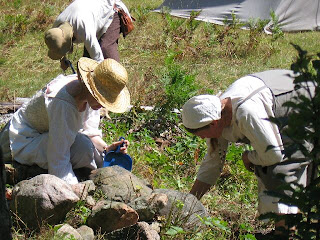 They had to clear away the bracken and accumulated dried vegetation, broken bits and pieces, and make sure the original stones were seated firmly. Then they mixed up their clay and began a serious mortaring effort. After getting thoroughly muddy in the process, they were eventually rewarded with an oven-like object, and were able to make a small fire to preheat and dry the clay.
They had to clear away the bracken and accumulated dried vegetation, broken bits and pieces, and make sure the original stones were seated firmly. Then they mixed up their clay and began a serious mortaring effort. After getting thoroughly muddy in the process, they were eventually rewarded with an oven-like object, and were able to make a small fire to preheat and dry the clay.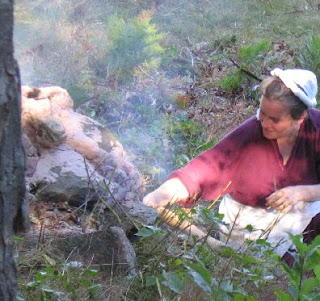 Wood for the real heating was prepared, and the fire in the oven started. When it was deemed hot enough, the remains of the fire were swept out, and a loaf of bread dough placed inside, and the opening blocked with a stone. Later, after nightfall, the bread was removed, and declared a success.
Wood for the real heating was prepared, and the fire in the oven started. When it was deemed hot enough, the remains of the fire were swept out, and a loaf of bread dough placed inside, and the opening blocked with a stone. Later, after nightfall, the bread was removed, and declared a success. Hopefully, next year the oven will still be in decent enough shape that so much time won't be spent on preparing it, and more time can be spent on using it. Ideally, if the heating is started earlier (not late in the day at the end of the weekend!) we may be able to use the oven to bake several things, utilizing the temperature curve that is part of the natural process.
Hopefully, next year the oven will still be in decent enough shape that so much time won't be spent on preparing it, and more time can be spent on using it. Ideally, if the heating is started earlier (not late in the day at the end of the weekend!) we may be able to use the oven to bake several things, utilizing the temperature curve that is part of the natural process.
